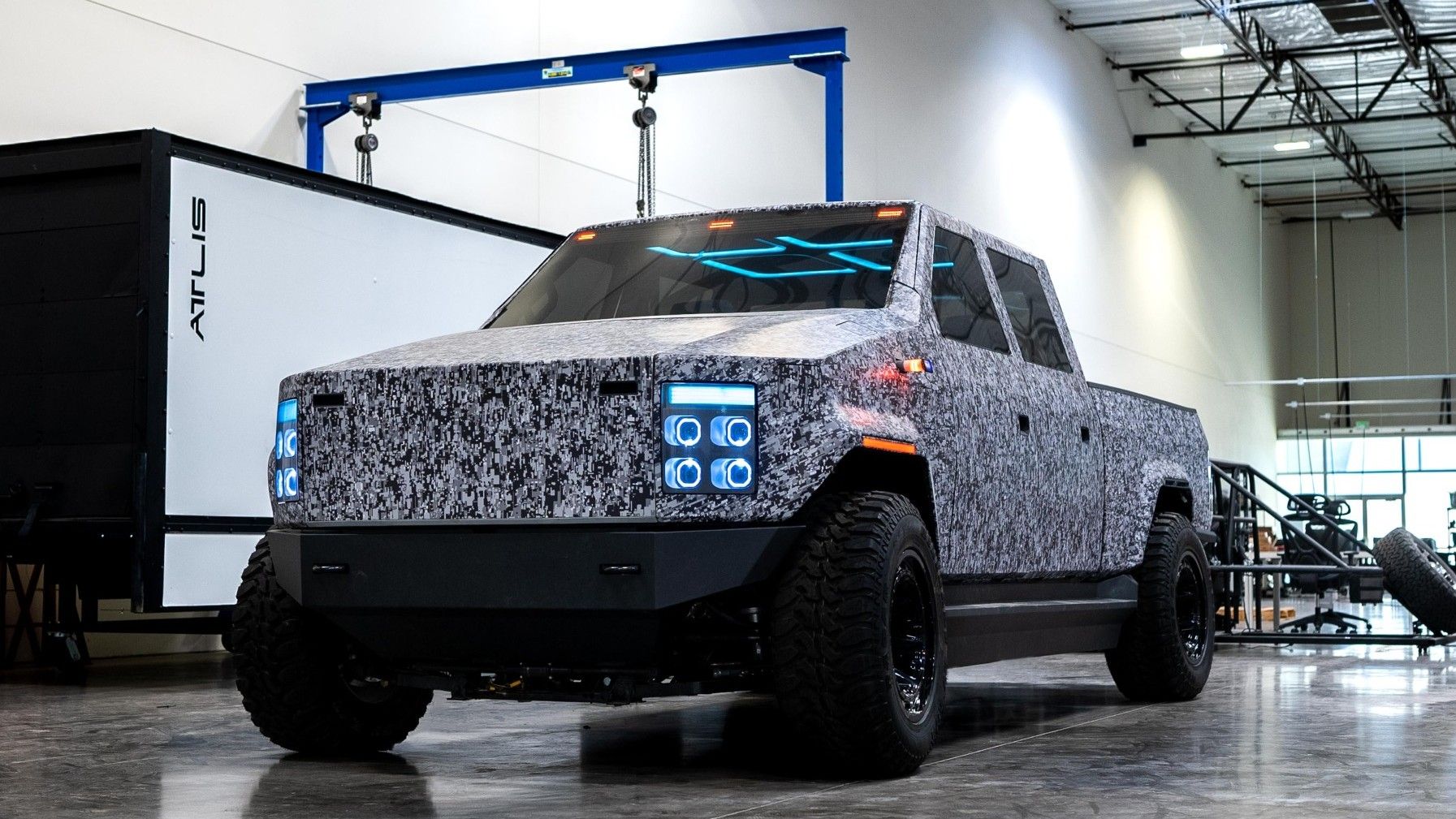
The electric pickup truck segment has seen significant progress in recent years, marked by notable advancements in battery technology, extended driving ranges, and remarkable towing capabilities. These innovations have made electric pickups a compelling choice for those seeking more efficient vehicles. In this era of excitement, the latest eco-friendly electric trucks not only match but often surpass the power of traditional internal combustion engine trucks while providing enhanced versatility and robust towing capacities. Take, for instance, the Rivian R1T, a trailblazing electric pickup with over 800 horsepower, 900 pound-feet of torque, and an impressive maximum towing capacity of 11,000 pounds.
Given the immense popularity of pickup trucks in the United States, it’s no surprise that both established automotive giants and emerging startups have redirected their focus toward electric pickups. A new contender has emerged on the scene, with the potential to disrupt the electric pickup truck market. Atlis Motor Vehicles, rebranded as Nxu for its NASDAQ listing, unveiled its XT pickup in 2019, accompanied by bold claims that, if substantiated, could challenge the dominance of the current industry leaders. While it may send shivers of anticipation, only time will reveal whether the Atlis XT can deliver on its promises. For now, let’s delve into the details of this enigmatic electric pickup truck.
The information in this article was sourced from reputable references including the manufacturer Atlis (Nxu), and Motortrend among others.
The Origin Of The Atlis XT Pickup Truck
In 2016, Mark Hanchett founded Atlis Motor Vehicles, following his departure from an engineering role at Axon. The driving force behind the birth of Atlis was elegantly simple: the absence of an electric pickup truck in the market. What began as a modest garage project, involving the conversion of his GMC pickup’s diesel engine into an electric vehicle, quickly evolved into a visionary concept of crafting an all-electric work truck from scratch.
The pivotal question arose: why prioritize an electric pickup truck over an electric car? Mark Hanchett’s reasoning was clear: to effect the most substantial change and shift towards a sustainable future, electric vehicles needed to target a specific audience. Hanchett shared his perspective with Business Insider, stating,
“It’s not the daily commuters who will make the greatest impact; it’s those who rely on their trucks for their daily work. The individuals who journey to and from job sites, whether in utility, construction, mining, agriculture, or any other industry – these are the markets we are dedicated to serving.”
The Atlis XT Attempts To Offer An Electrifying Experience
Atlis is on the cusp of unveiling a remarkable electric truck, the Atlis XT, offering an impressive 500-mile range on a single charge. This places it in the same league as Tesla’s high-end tri-motor Cybertruck, set for mass production in 2024, and significantly surpasses the capabilities of the Rivian R1T (400+ miles) and the Ford F-150 Lightning (300+ miles). While Atlis hasn’t officially disclosed battery pack capacities, reports suggest two options: 125 kWh and 250 kWh, with a base model covering around 300 miles. In addition, two trims with ranges of 400 miles and 500 miles are expected. Notably, Atlis claims this electric pickup has a lifespan of one million miles.
Hailing from Arizona, the home of the Sonoran Desert, Atlis asserts the ability to fully charge its XT in just 15 minutes using the 1.5-megawatt Atlis Advanced Charging (AAC) system. This rapid charging capability surpasses the fastest-charging electric vehicle, the Lucid Air Pure, which uses a 350-kilowatt charger and reaches 80% charge in the same time frame. Mark Hanchett, a representative, shared a noteworthy achievement in battery pack charging times, exceeding expectations by charging a 3 kWh pack to full in just 12 minutes and 35 seconds. The Atlis XT boasts an astounding towing capacity of 35,000 pounds, surpassing both the Hercules Alpha (12,500 pounds) and the Tesla Cybertruck (14,000 pounds). It can also handle payloads of around 5,000 pounds with ease. This exceptional towing capability is attributed to its unique chassis construction, complemented by a four-wheel independent suspension and nearly perfect 50/50 weight distribution. With a substantial 12-inch ground clearance, it’s well-suited for off-road adventures.
Atlis XT Powertrain Specs
|
Range on a Single Charge |
500 miles |
|
Battery Pack Options |
125 kWh, 250 kWh |
|
Charging Time (0-100%) |
15 minutes with Atlis Advanced Charging (AAC) system |
|
Torque |
12,000 pound-feet |
|
Top Speed |
120 mph |
|
Chassis and Platform |
XP Platform with four independent electric motors and self-leveling air suspension |
|
Acceleration (0-60 mph) |
Unloaded: ~5 seconds, Fully loaded: 18 seconds |
(Specs sourced from Atlis)
Atlis proudly presents the XT’s capabilities, with over 600 horsepower and 12,000 pound-feet of torque from four independent electric motors and self-leveling air suspension for maximum traction. The Atlis XT promises a top speed of 120 mph, outperforming its rival, the Rivian R1T (top speed of 110 mph), and closely challenging the Tesla Cybertruck, which achieves a top speed of 130 mph. It can accelerate from 0 to 60 mph in about five seconds when unloaded, making it one of the fastest electric pickups. Even when fully loaded, this cutting-edge electric pickup accelerates from 0 to 60 mph in just 18 seconds. At the core of the Atlis XT electric pickup is the innovative XP Platform, a skateboard-inspired chassis with a substantial battery pack and a dedicated electric motor powering each wheel. This platform not only underpins the XT but also holds potential as a standalone product. It offers versatility for custom truck builders and upfitters interested in developing recreational vehicles or other specialized vehicles, thereby expanding the platform’s applications and market reach.
The XT Offers A Ruggedly Handsome Design
The pre-production concept of the XT reveals an exterior design that predominantly prioritizes practicality, visibility, and improved aerodynamics, which is made possible by the absence of a large front engine bay. This translates into increased vehicle storage, making it especially appealing for work-related purposes. Furthermore, the front of the truck boasts an impressive 18.5 cubic feet of storage space. When you first set your eyes on the Atlis XT, you may notice the absence of traditional side mirrors. Instead, Atlis has opted for side cameras to offer drivers an improved field of view. For those who prefer the traditional approach, the electric pickup truck also features retractable exterior mirrors.
The interior design of the Atlis XT exudes luxury and can accommodate up to six passengers. What truly distinguishes the interior is its well-thought-out design, specifically tailored to meet the needs of work-oriented drivers. This results in a sleek and somewhat minimalist aesthetic. The generously spacious interior showcases a unique dashboard design that incorporates displays for side mirrors surrounding the steering wheel, along with an instrument cluster display. The central focal point is a 12.8-inch touchscreen featuring Apple CarPlay and Android Auto Integration. You can personalize your experience with the option of an eight-foot bed, available as a standard feature in the high-end version of this electric pickup truck or as an optional upgrade for the base trims. Moreover, you can further enhance the truck’s ambiance with premium additions such as leather and carpeted interior options.
Atlis Offers An Innovative Subscription Model
Atlis has introduced a subscription model that distinguishes itself in the automotive industry through its unique approach. What sets Atlis apart is its subscription program, designed as an alternative to conventional car ownership and leasing. For a monthly fee of $700, you can have a brand-new Atlis XT parked in your driveway, and it comes with insurance coverage. This program covers routine maintenance, inspections, electric pickup truck registration, and free charging at Atlis stations. Furthermore, you can cancel your subscription without incurring penalties, or choose to continue with it, receiving a fresh Atlis XT every three, five, or seven years. This subscription model offers a distinct way to reduce the initial financial burden of owning an electric pickup truck.
Let’s delve into the pricing of the Atlis XT electric pickup truck. Prospective buyers can choose between the entry-level XT version with a 125 kWh battery pack and a 300-mile range, available at $45,000, or the top-of-the-line version boasting a 500-mile range, priced around $69,000. Atlis Motor Vehicles unveiled the XT prototype in late 2021, accompanied by some bold claims. Naturally, this formidable electric pickup truck faced a fair amount of skepticism. However, Atlis has been commendably transparent, regularly sharing its progress with the public.
In an update, Mark Hanchett, the founder and CEO of Atlis, along with his team, provided insights into their recent developments. In 2022, the company went public due to rising interest rates and limited access to capital, a common challenge for startups in the EV sector. Since going public, Atlis has secured the initial $10 million of a $20 million facility and successfully designed and implemented the dry room and the AMD battery pilot production line. Despite incurring losses, the company remains optimistic and believes it is on the right track. While production of the XT was originally slated to commence in late 2022, it’s reasonable to anticipate that it may begin by the end of 2023 or in early 2024.



